Tips for Planning Your Own Wedding: Stress-Free Strategies
Planning your own wedding can be both exciting and overwhelming. With so many details to consider, from the venue and guest list to the decorations and timeline, getting started might seem daunting. This article will provide you with essential tips to make the process smoother and more enjoyable.
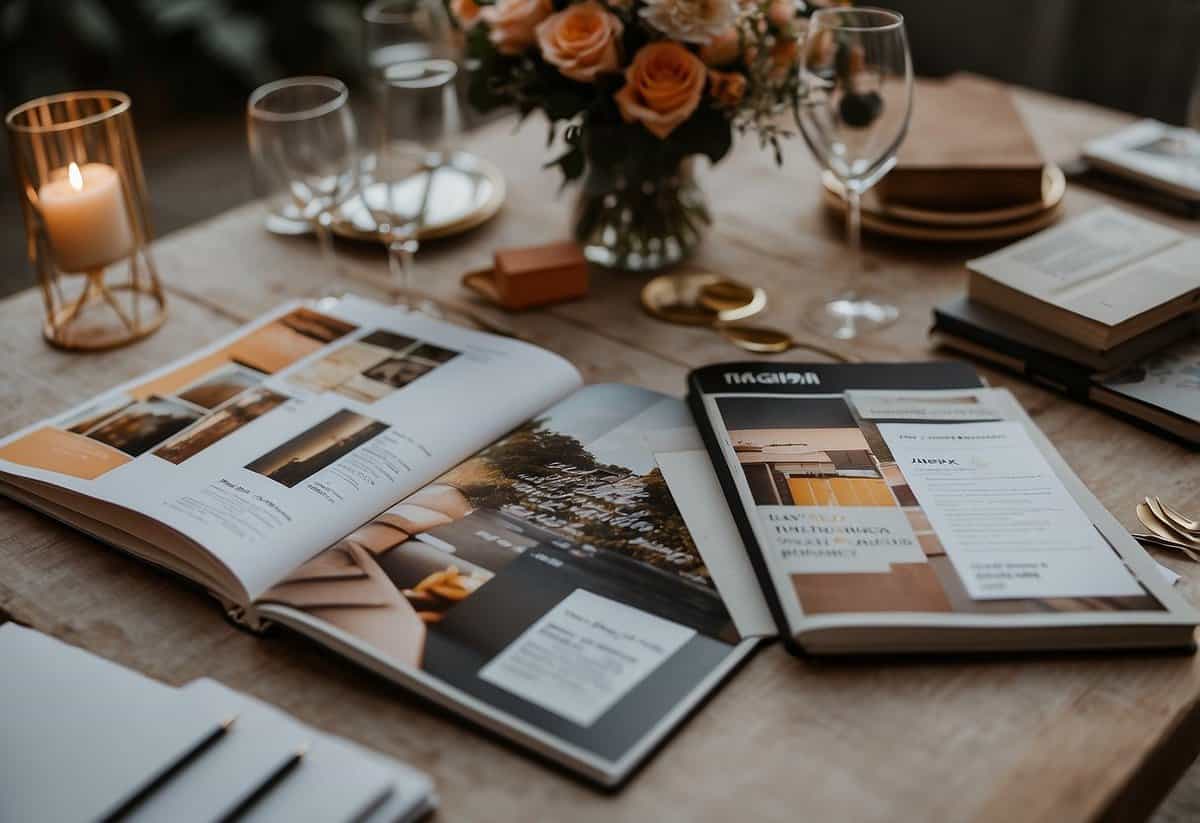
By staying organized and focused, you can ensure that your wedding day turns out just as you’ve always dreamed. Whether you’re months away from the big day or just beginning your planning journey, these tips will help you navigate each step with confidence and ease.
1) Choose a Date and Venue Early

Picking a date and venue is one of the first things you should do. Start by deciding on a season or month. Think about the weather and if you want an indoor or outdoor wedding.
Popular venues get booked quickly, so it’s smart to reserve your spot as soon as possible. Saturdays are in high demand, so consider other days to save money.
Having a flexible date can give you more venue options. Also, find out if the venue has a backup plan for bad weather. This ensures your big day goes smoothly, rain or shine.
By choosing your date and venue early, you set the stage for all your other plans. It helps you avoid stress and keep everything on track.
2) Set a budget and stick to it

It’s important to set your wedding budget early on. This will help you know what you can afford and avoid overspending. Start by having a conversation with your partner and any family members who are contributing.
Use online tools to help you figure out average costs for weddings in your area. This will give you a good idea of what to expect and help you set a realistic budget. Write down all your expected expenses like venue, catering, and decorations.
Once you set your budget, put all your wedding money into a separate account. This makes it easier to track your expenses and avoid mixing wedding costs with your daily spending. Keep a close eye on this account, and update it regularly.
Track every payment and save receipts. This can help ensure that you stay within your budget. If you find you’re overspending in one area, look for ways to cut back in another.
3) Create a Guest List

Decide who has a say in the guest list. It could just be you and your partner or might also include your parents, especially if they are contributing financially.
List your must-invite guests first. These are the people you absolutely want at your wedding.
Create an A-list and a B-list. The A-list includes your most important guests. The B-list has people who you’d like to invite if space allows.
Set a policy for plus-ones. Decide early if you’ll allow guests to bring a date. This can help avoid confusion and keep your numbers in check.
Keep etiquette in mind. Be mindful of inviting too many distant relatives and focus more on people who are close to you.
4) Shop for Your Wedding Dress

Shopping for your wedding dress is an exciting part of wedding planning.
Start by setting a budget. Wedding dresses can be pricey, so knowing how much you can spend will help narrow down your choices.
Think about the theme and venue. A beach wedding may call for a flowy, lightweight gown, while a formal ballroom event might need something more elegant and structured.
Bring a small group of trusted friends or family for opinions. Too many voices can make the process overwhelming.
Schedule your appointment early. Dresses often need alterations, and you want plenty of time for fittings.
And remember to have fun! This is a special moment in your wedding journey.
5) Hire a Photographer
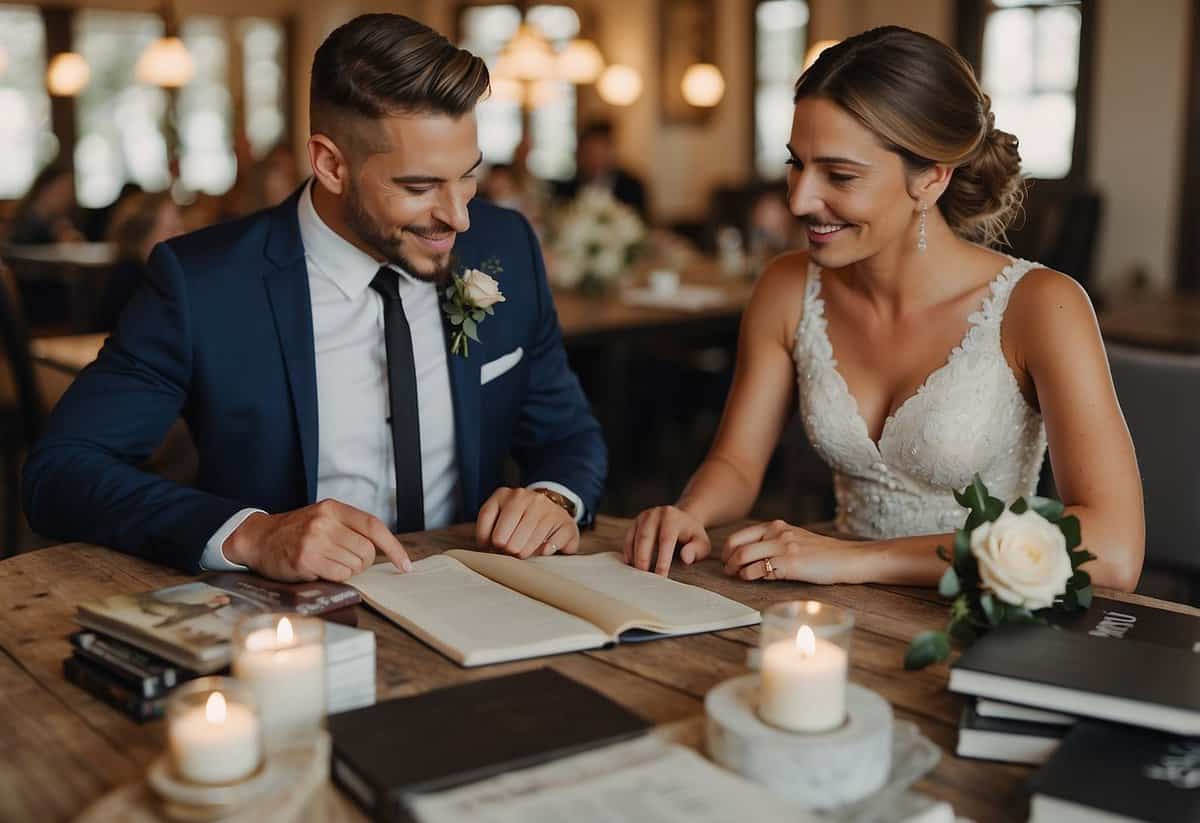
Choosing a wedding photographer is a big decision. Their work will capture the special moments of your day. Look for a style that matches your vision. Think about whether you prefer candid shots or more posed photos.
Meeting with potential photographers is also important. Make sure you feel comfortable with them. This will help those natural, genuine moments shine through.
Ask about their experience and see a full wedding album they’ve done. This gives you a better idea of their consistency. It’s also wise to discuss their backup plan if something goes wrong. For example, what happens if they get sick?
Lastly, consider your budget. Wedding photography costs can vary a lot. Make sure you understand what’s included in the package. This often covers the photographer’s time, editing, and sometimes even a photo album.
6) Book a Caterer
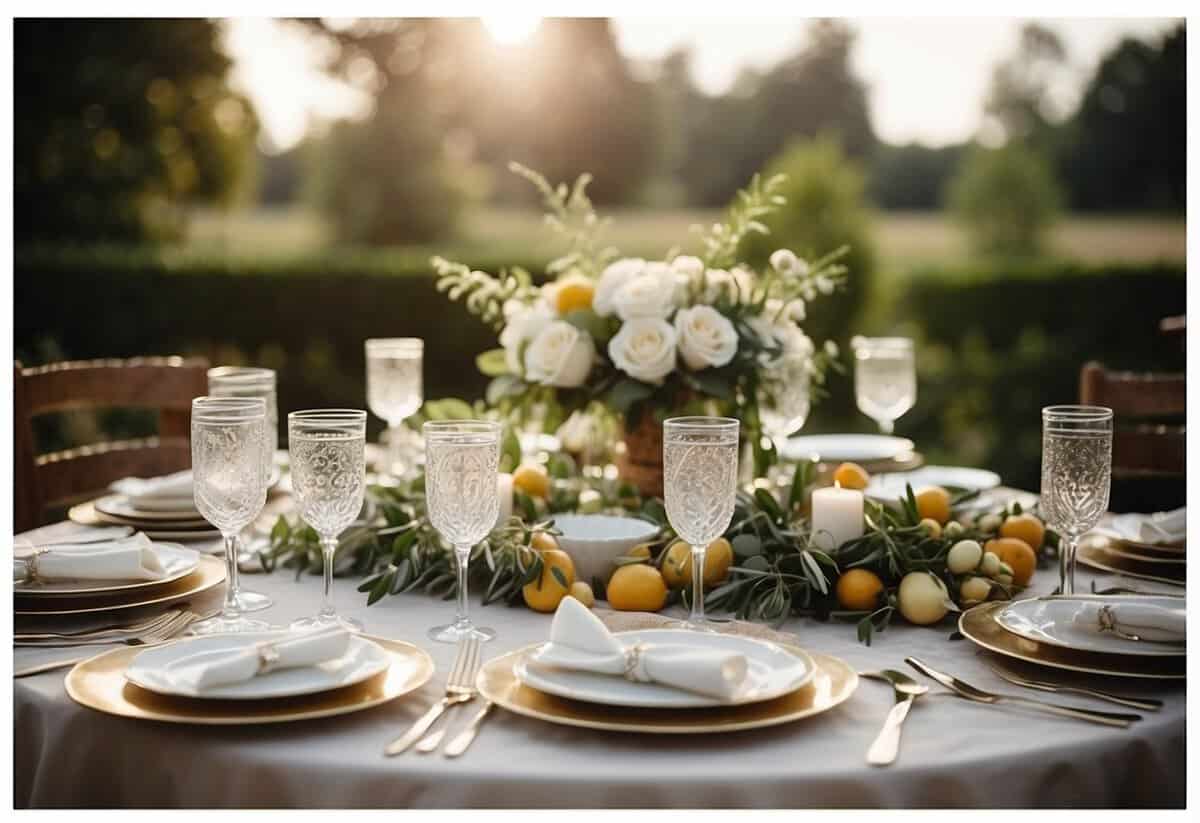
Finding the right caterer for your wedding is crucial. Start by asking recently-married friends and family members for recommendations. Someone who had great food at their wedding can point you to a reliable caterer.
Your wedding planner can also help find a trusted caterer. They often have connections and know which ones can handle weddings of your size.
Schedule tastings with a few caterers. This way, you can sample their food and discuss your menu ideas. Make sure to ask if they can cater to any dietary restrictions your guests might have.
Don’t forget to confirm details like arrival and teardown times with your caterer. Also, provide them with a schedule and floor plan layout, so they know where to set up and serve food.
Include vendors in your meal count, too. They’ll be working hard and will appreciate being fed. Booking the right caterer ensures everyone enjoys a great meal on your special day.
7) Send Out Invitations

Wedding invitations should be sent out 8-12 weeks before the big day. This gives your guests enough time to plan, RSVP, and make any necessary travel arrangements.
For destination or large weddings, consider mailing them earlier, about 12-16 weeks in advance. This extra time helps guests organize their schedules and book travel.
Triple-check your invitation proofs before printing. Ask someone detail-oriented, like a grammar-savvy friend, to review them. This ensures there are no mistakes.
Remember to include all important details: date, time, location, dress code, and RSVP instructions. Being clear helps avoid confusion for your guests.
Don’t forget the budget. Wedding invitations usually take up about 2% to 5% of your total wedding budget. Factor in costs for paper, printing, postage, and any extra events you want to invite people to.
By following these tips, you’ll make sure everyone gets the info they need to be there for your special day.
8) Plan your wedding day timeline
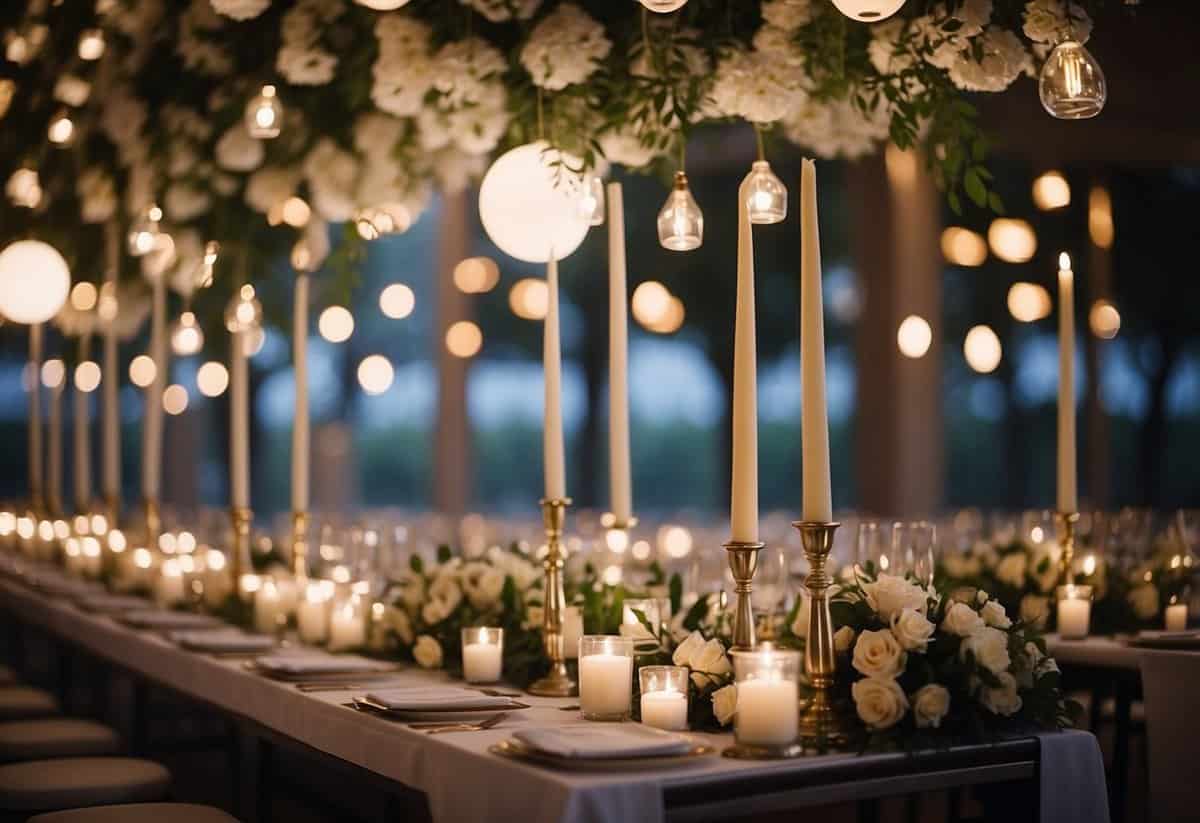
Creating a timeline for your wedding day helps ensure everything runs smoothly. Start by deciding on the time your ceremony begins.
Next, plan the events before the ceremony. Allocate time for getting ready, photos, and travel between locations.
Don’t make guests wait too long to eat. Dinner should start no more than 45 minutes after the reception begins.
Include key moments like speeches, cake cutting, and the first dance. Spread these out to keep the energy up throughout the evening.
Remember to schedule a time for your farewell and goodnight. This is usually around 11:30 p.m., but pick a time that works for you.
Keep in mind that each wedding is unique. Adjust your timeline to fit your vision and needs!
9) Arrange Transportation
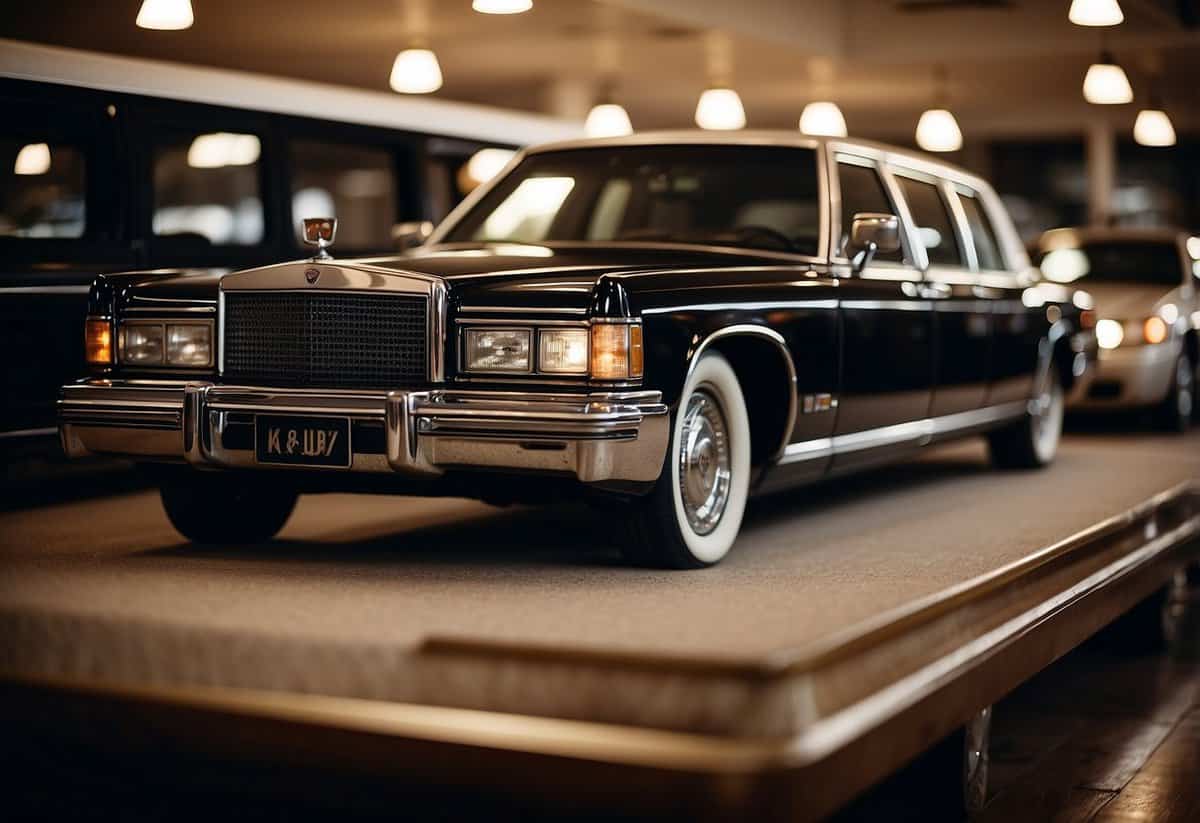
Planning transportation for your wedding is important to keep things running smoothly. If many guests are coming from out of town, they might not have cars, so you should consider providing shuttles or buses.
A limo or party bus can add a special touch and keep your bridal party together. It’s a good idea to book early, especially in peak seasons like summer or prom time.
Consider guests with special needs. Make sure transportation is accessible to everyone, and arrange specific plans for those who might need extra help. This ensures all guests feel included and comfortable.
Don’t forget to allow a buffer time between the ceremony and reception. This gives you and your guests time to relax and enjoy the day without feeling rushed.
10) Choose your wedding party
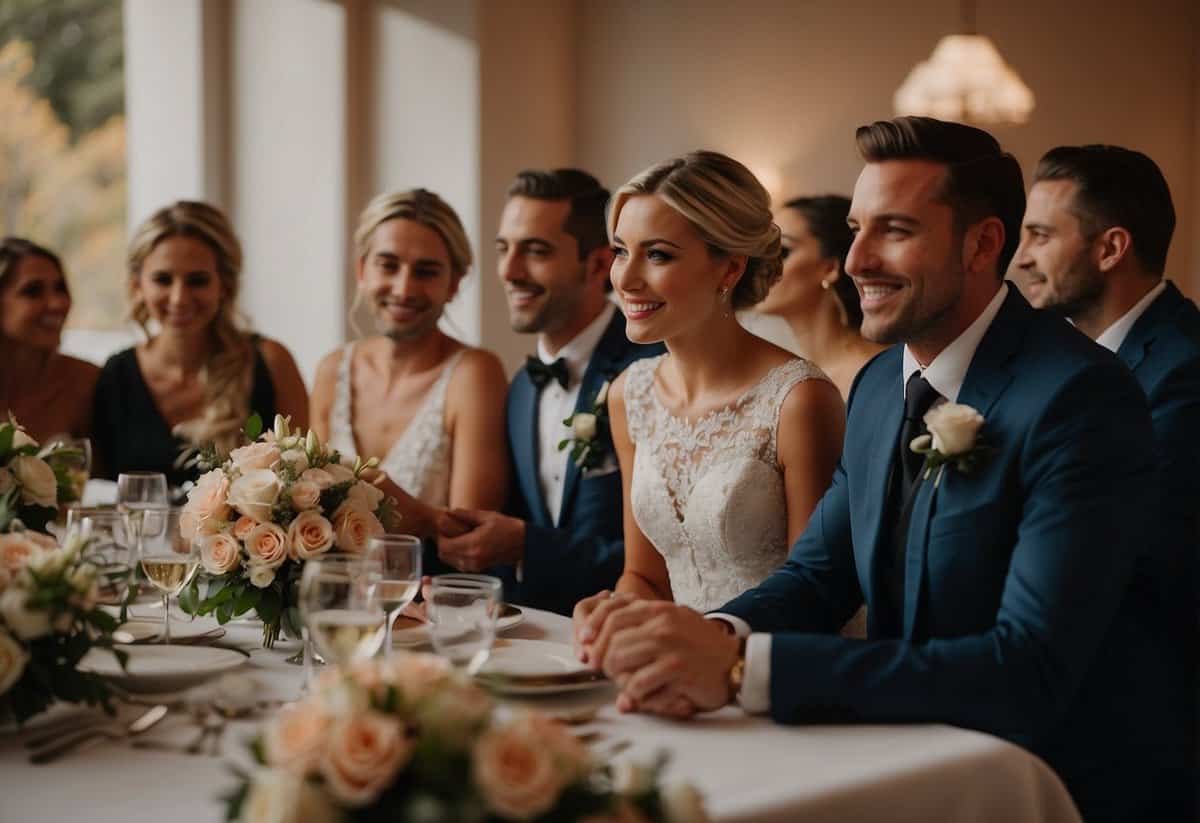
Choosing your wedding party is a special part of wedding planning. These are the friends and family who will stand by your side on your big day.
Think about who you trust and feel close to. This can include siblings, childhood friends, or even college buddies.
Remember, it’s your day, so choose people who support you and your partner.
Consider how many people you want in your wedding party. It can be as few or as many as you like. Talk with your partner and decide together.
Reach out to them early. This way, they have time to prepare and be there for you.
Making this choice can be fun and meaningful. Just follow your heart and pick those who mean the most to you.
Setting the Date

Deciding when to have your wedding is one of the most important steps. You need to think about the best season and make sure your guests can make it.
Choosing the Perfect Season
Your wedding date can set the tone for your entire celebration. Fall is a popular choice, with October being a favorite month. It offers cool weather and beautiful colors. Spring is another great option, with blooming flowers and mild temperatures.
Summer might be perfect if you love the sun. It’s ideal for beach or outdoor weddings. Just keep in mind that it can get really hot and more expensive due to peak wedding season rates.
Winter weddings can be magical with a cozy atmosphere. However, weather conditions like snow might make travel difficult for some guests. Whatever season you pick, think about how it matches your wedding theme and personal style.
Considering Guests’ Availability
Your guests play a huge role in your wedding, so their availability is crucial. Check if the date conflicts with holidays, school schedules, or major local events. Avoid dates around big holidays unless your guests live nearby and can travel easily.
Send out save-the-date cards as soon as you pick your date. This gives everyone plenty of time to plan. Weekends are generally better for most people since they don’t have work.
Consider setting up a special email or message group to quickly share updates. This way, everyone stays in the loop, and you can address any questions or concerns that might come up. Communication is key to ensuring your guests are as excited about your big day as you are.
Budgeting Your Wedding

Planning a wedding involves balancing dreams with finances. To achieve this, it’s crucial to focus on your most important expenses and keep an eye out for hidden costs.
Prioritizing Key Expenses
Start by writing down the aspects of your wedding that matter most to you. This might include the venue, catering, photography, or your attire. Allocate a larger portion of your budget to these essential items.
For example, if having a picturesque venue is top priority, set aside more money for it and be ready to cut back on other areas. Likewise, a great photographer can capture memories that last a lifetime, so this might be another area where you want to invest more.
Breakdown of a typical wedding budget might look like this:
- Venue: 30%
- Catering: 20%
- Photography: 10%
- Attire: 7%
Adjust these percentages based on what’s most important to you and your partner.
Finding Hidden Costs
Weddings come with many unexpected expenses. These can sneak up on you if you’re not careful. Common hidden costs include taxes and service fees, tips, overtime charges, and alterations for your wedding dress or suit.
To avoid surprises, always ask vendors for a detailed breakdown of costs. For example, a photographer might charge extra for photo albums or additional shooting hours. Also, remember to budget for small things like postage for invitations or special décor items.
Budgeting checklist to find hidden costs:
- Taxes and Service Fees
- Tips for Vendors
- Overtime Charges
- Alterations and Fittings
- Postage for Invitations
Staying organized and planning ahead can help keep your wedding budget on track.
Personalizing Your Ceremony
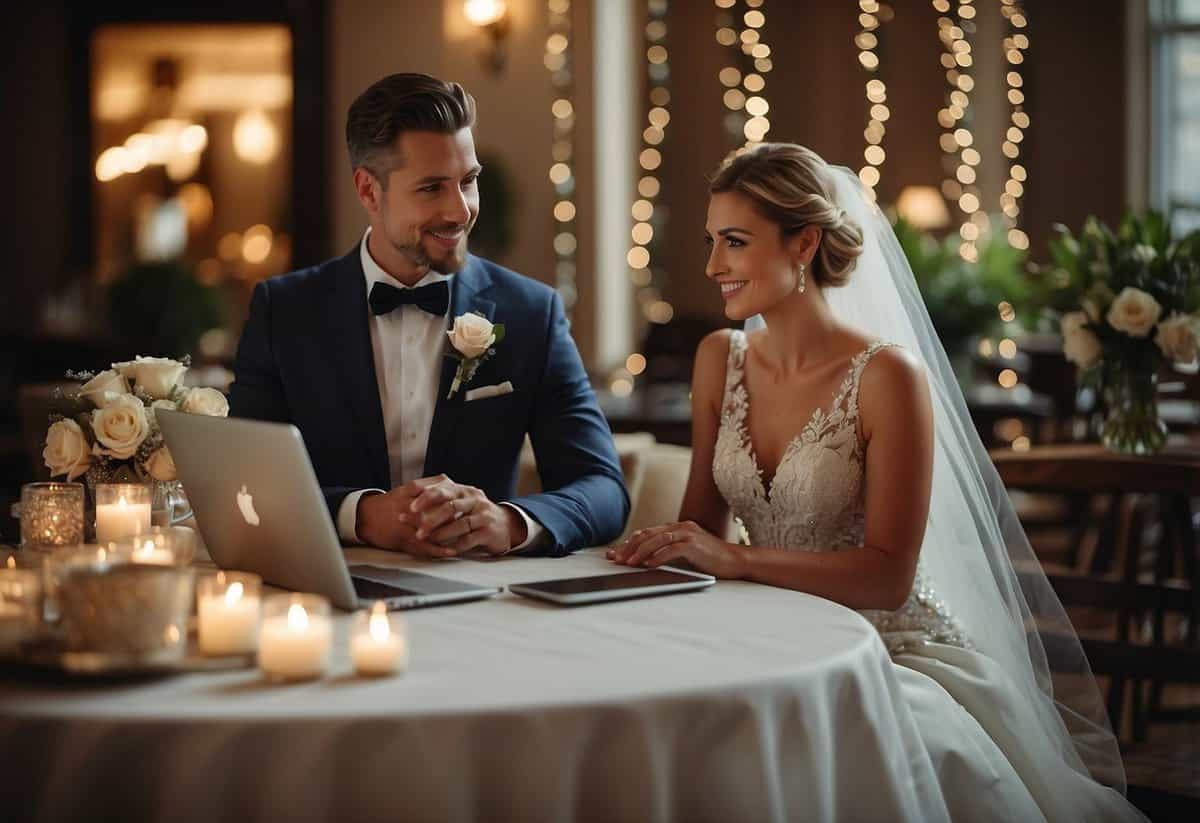
Creating a wedding that feels unique and special can make your big day even more memorable. Adding personal touches, like choosing a venue that has special meaning and writing your own vows, can help make your ceremony a true reflection of your love story.
Choosing a Meaningful Venue
Picking a venue that holds special meaning to you and your partner can set the tone for your wedding. It could be where you first met, had your first date, or a place that represents a shared passion.
For example, if you both love nature, an outdoor ceremony in a park or garden might be perfect. Think about places where you’ve shared important moments and see if any of them can host weddings.
Taking the time to find the right spot can make your ceremony feel more intimate and special. Don’t forget to consider practical aspects too, like accessibility for guests and weather conditions. The right venue sets the mood and makes your ceremony unforgettable.
Incorporating Personal Vows
Writing your own vows is an excellent way to add a personal touch to your ceremony. It allows you to express your feelings and promises in your own words. Start by reflecting on your relationship and what makes it unique.
Share stories, jokes, and moments that define your partnership. Keep your vows sincere and heartfelt. You don’t have to be a poet – simple, honest words are often the most moving.
Practice your vows aloud to ensure they feel natural and are the right length. If you’re nervous about writing, consider getting tips from friends or even collaborating with a professional. Incorporating personal vows will make your ceremony meaningful for both you and your guests.







